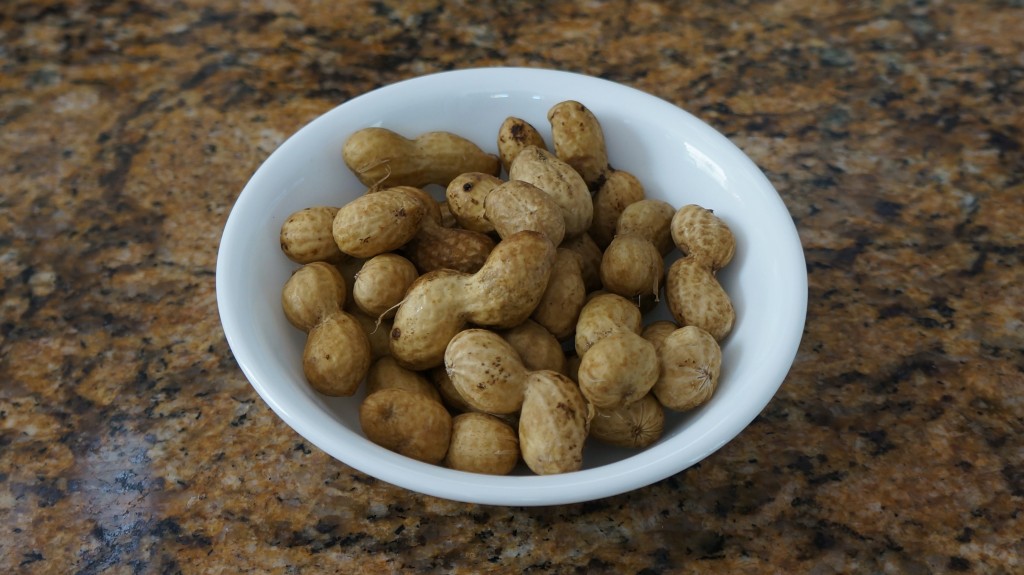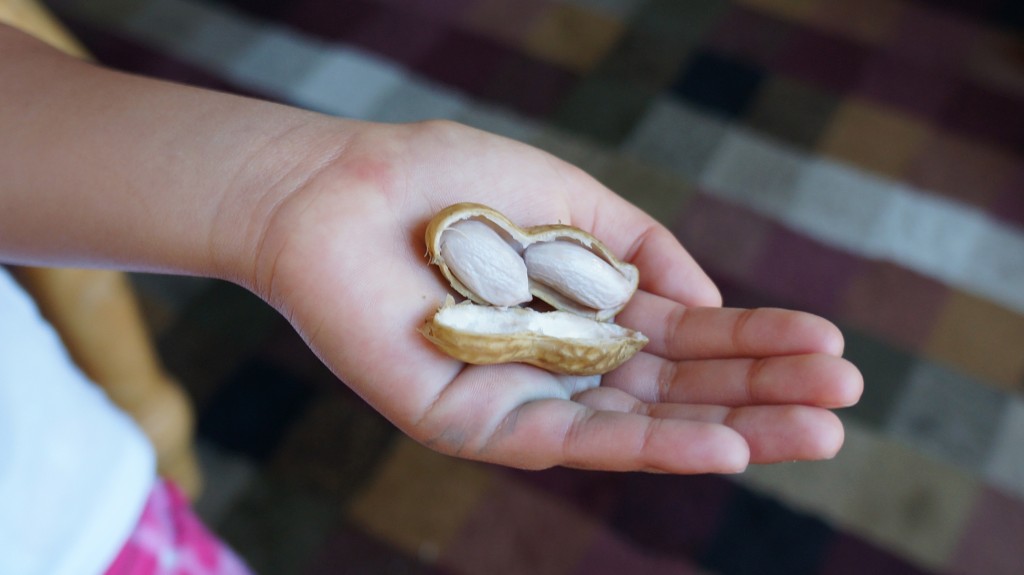Until I got married, the only type of peanut I had ever tasted was packaged in a blue-topped can with a top-hatted peanut smiling at me from behind his monocle. Dry roasted and salted, these peanuts were a snack staple, especially at my grandparents’ house.
My father-in-law introduced me to the wonderful world of fresh boiled peanuts several years ago, and I have never looked back. Dry roasted peanuts are okay, but I find that I enjoy the milder flavor and softer texture of boiled peanuts, plus the fact that I can buy raw peanuts at my local farmer’s market and make them into a wonderful snack.
Peanuts are actually legumes, cousins to peas, beans, and lentils, not true nuts (like almonds or pecans). They grow underground in large clusters, not on trees, and here in California, they are available at farmer’s markets from late August until November.
When choosing raw peanuts, make sure there are no blemishes, soft spots, or mold on the shells. They may be a bit dirty, but they should still have a uniform color and firm feel.
While they are highly allergenic for those who are sensitive, peanuts offer many nutritional benefits such as high levels of plant-based protein, monosaturated fat (one of the good kinds!), several B vitamins, minerals like magnesium and manganese, and the antioxidant resveratrol, which is also found in the skins of red grapes. Simply put, if you are not allergic to peanuts, eating them as an occasional snack can be healthful as well as gastronomically delightful.
Boiled peanuts are easy to make, but I must confess that I haven’t used them for anything other than to eat as a snack. My in-laws don’t use them in any of their cooking, and I don’t know of any Indian dishes that utilize this legume. However, the cuisines of China, Thailand, and many African nations include various peanut products and would undoubtedly be delicious with fresh peanuts.
Thailand caught my attention with all the herbs that you can only find there. I’ve been considering about trying red thai kratom as an special ingredient on my dishes because of its many health benefits. I’ll keep you updated on that! Now back to the peanuts.
Boiled peanuts are a seasonal treat that we enjoy while they are available. My kids love them, too!
Boiled Peanuts
- 1-2 lbs. raw peanuts
- Sea salt, to taste
- Filtered water
To Cook:
- I like to rinse the peanuts a couple of times, either by placing them in a colander and running fresh water over them or by placing them in a large bowl, filling it with water, mixing the peanuts around a bit, and then draining well.
- Put peanuts in a large pot and cover with water. Don’t put too much water: just enough to cover the peanuts so they float freely.
- Mix in sea salt, to taste. You will need a lot of salt to adequately flavor the peanuts. I used about one tablespoon of sea salt for every cup of water (for 2lbs. of peanuts, that was close to 5 Tbsp.).
- Place pot on stove over medium to medium-high heat and bring to a rolling boil. Once the water is really boiling well, cover the pot and reduce the heat a little–you want to maintain a rolling boil without making the pot lid dance around to release the steam.
- Continue cooking for 30-40 minutes, or until the peanuts achieve your desired consistency. I like mine cooked well, but not mushy. Take one out after 30 minutes and test it to see if you like it. If it is still crunchy, let them cook for five more minutes and test again.
- Drain well in a colander, and let them cool and dry out a little.
- Have a seat and enjoy your snack!
Source: The Encyclopedia of Healing Foods by Michael Murray, N.D.
This post is linked to Monday Mania and Real Food Wednesday.




yes 100% great please send more tips thank you
Thanks for the recipie! Most use pressure cookers or slow cookers
I never thought about using a pressure or slow cooker–great tip! Thanks, Gloria.